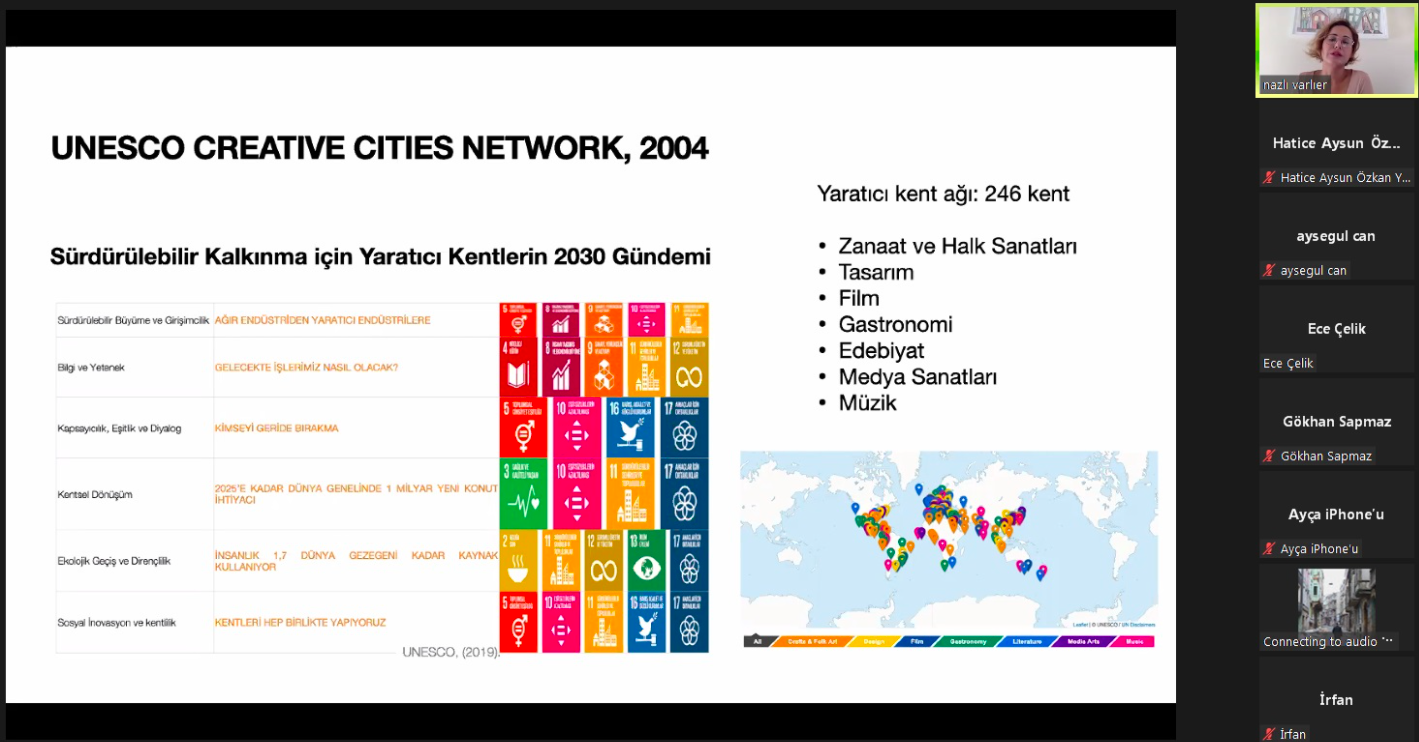The twenty-fourth seminar of the “Istanbul Urban Studies” seminar series organized by Istanbul Medeniyet University, Department of City and Regional Planning was held online on Friday, November 12. In the seminar moderated by City and Regional Planning Department Lecturer Dr. Ayşegül CAN, MSc Engineer Nazlı VARLIER was the guest with her presentation titled “Bütüncül Bir Yaklaşım Üzerinden Yaratıcı Kent Kavramının İncelenmesi: Tasarım Şehri İstanbul” (Examination of the Concept of Creative City through a Holistic Approach: Design City Istanbul).
VARLIER, who started her presentation with the emergence of the concept of the ‘creative city’, then discussed the concepts related to the creative city such as the creative economy, creative sector, creative class and cultural industries. Explaining the creative city studies of different researchers chronologically, the researcher touched on the academic, practice and policy dimensions of creative city studies. Explaining the creative city studies of different researchers chronologically, the researcher also explained the academic, practical and policy dimensions of creative city studies. She stated that creative cities have great importance in terms of sustainable growth and entrepreneurship, especially since they enable the transition from heavy industries to creative industries, and emphasized that this growth will also create development in the knowledge and skills of the future workforce in the city. She pointed out that this development should be achieved within the framework of the principles of inclusiveness, equality and dialogue, without leaving anyone living in the city behind, and that in addition to this, cities should be designed resilient with ecological sensitivities. It is necessary to support such a process with social innovation, urban awareness and public participation processes, and that cities should cooperate with all citizens.
VARLIER, which includes international criteria and organizations in the classification of creative cities, also discussed Istanbul, which joined the UNESCO Creative Cities Network as a “City of Design” in 2017, with academic, practical and policy dimensions. As a city of design, she examined the creative city studies carried out to increase efficiency in the indicator-policy cycle in Istanbul, in three different dimensions: academia-policy-practice, and revealed the relationship between conceptual dimensions. Mentioning that Istanbul lags behind in many areas according to creative city performance measures, the researcher also mentioned that urban management studies should be increased and evaluated the gaps for future studies at Istanbul level. She stated that there is a need for multidimensional and layered studies focusing on the relationship between the creative city, sustainability and performance.
In the discussion part, the reflections of creative city concept on Global South and Istanbul were compared.


